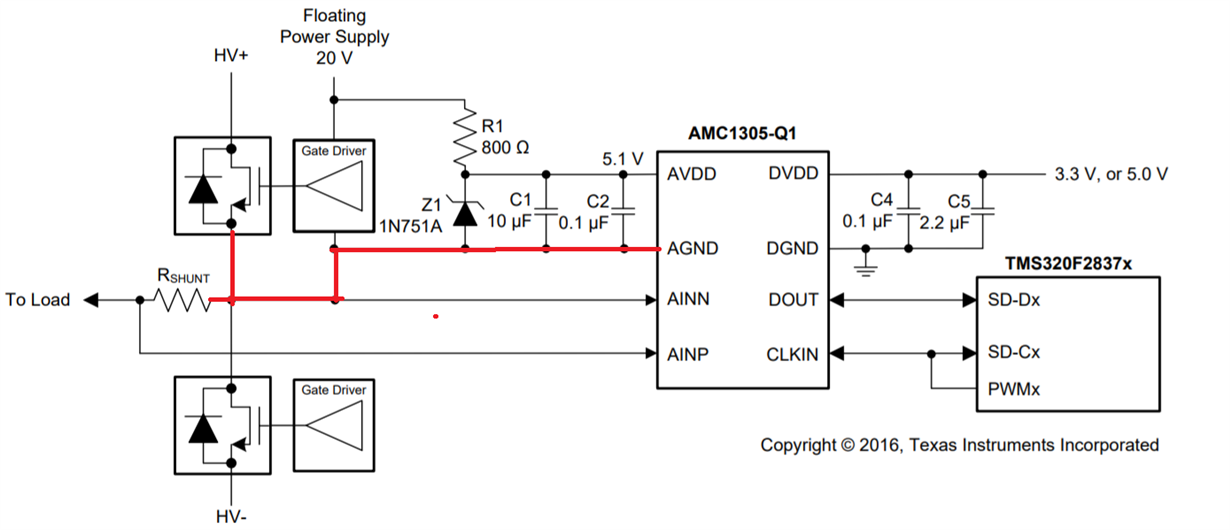I'm curious about the two questions here.
1. Why The AGND pin of the AMC1305M25 needs to connect to the one of the R shunt terminal? The floating power supply needs to connect to AVDD & AGND pin of AMC device for bias power, correct? Or other good reason?
2. Regarding to the layout with delta-sigma ADC, in general the IGBT module could be far away from the AMC1305 device and R shunt depends on different form factor. If so, how to do the layout optimization between the AGND of the AMC1305, Grounding of the Gate driver, IGBT's GND and Rshunt? Which GND connections should be as close as possible?


